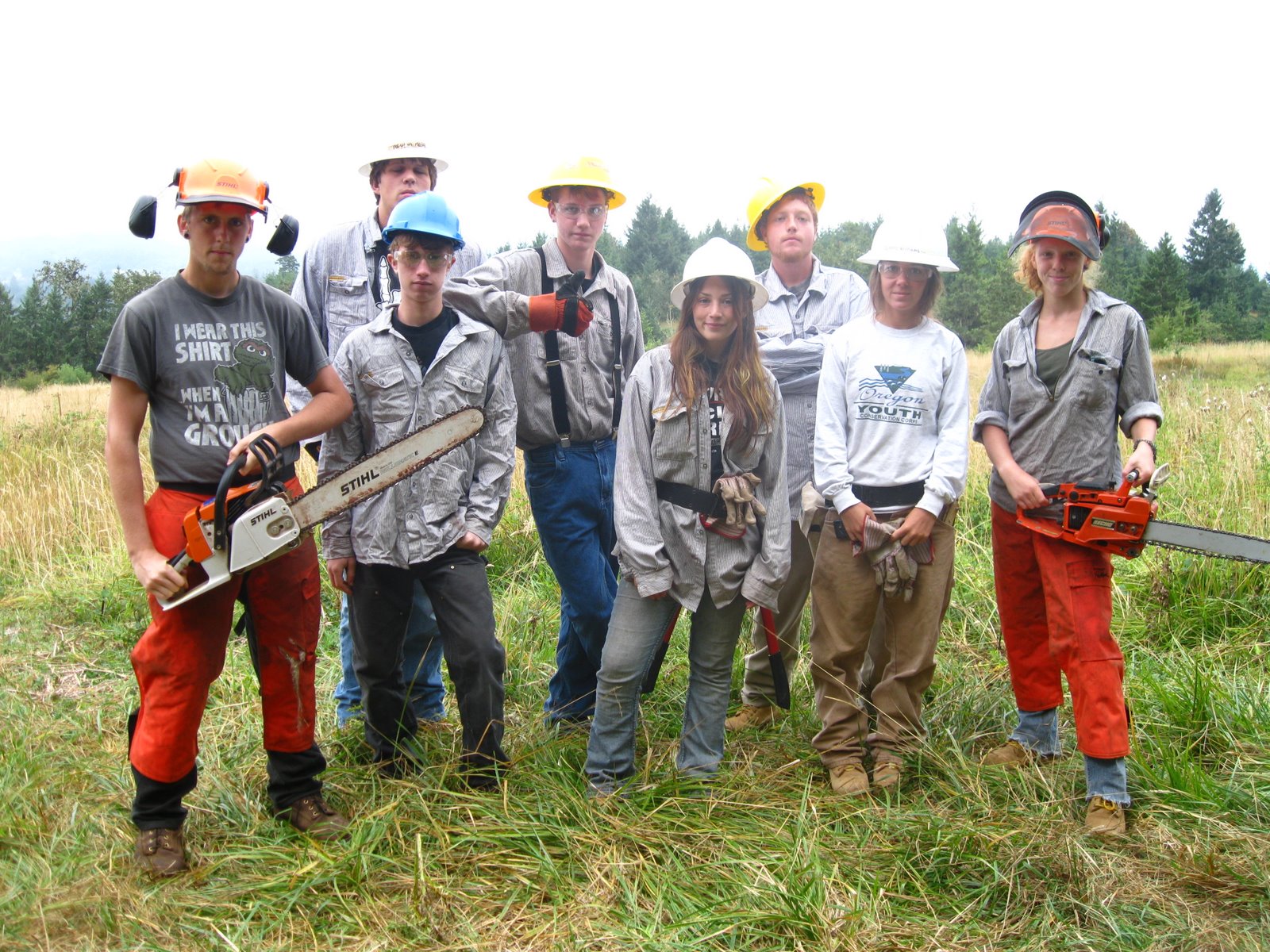
by editor | Mar 2, 2011 | Place-based Education
 The following is part of an on-line discussion between Greg Smith, Associate Professor at Lewis and Clark College in Portland, and David Greenwood, Associate Professor at Lakehead University in Thunder Bay, Ontario Canada.
The following is part of an on-line discussion between Greg Smith, Associate Professor at Lewis and Clark College in Portland, and David Greenwood, Associate Professor at Lakehead University in Thunder Bay, Ontario Canada.

Dear David,
I’ve been puzzling over an issue to raise with you for another blog entry, and I’ve found myself coming back to the impact that hierarchies of knowledge and skill have on the use of learning opportunities encountered in local communities and places. I recall this issue coming up with a friend in Madison, Wisconsin, more than a decade ago when his daughter was junior at the city’s most academically competitive high school—probably the same one you went to. She was interested in enrolling in a “chemistry in the community” course that would have allowed her to experience a more hands-on and problem-solving approach to science education. Her counselor discouraged her from doing so on the grounds that the kinds of colleges she was interested in attending would see this as a deficit. Jim, a biology professor committed to learning in the field, disagreed and wrote to academics at around a dozen colleges similar to those his daughter hoped to apply to and asked whether they agreed with the counselor. None did. His daughter enrolled in the course and ended up going to Earlham. Most students and parents, however, seem unlikely to challenge the counselor’s advice because of the way it represents common understandings about prestigious (theoretical and text-based) knowledge and less prestigious (applied and practical) knowledge. This seems like a fundamental issue we’ve got to address if we hope more educators begin to incorporate lived experience into the forms of instruction they share with students. (more…)

by editor | Jan 15, 2011 | Outdoor education and Outdoor School, Place-based Education
by Lindsay Letitia Huettman
I am out in the foggy, wet Pacific Northwest winter with my 10-12 year-old homeschoolers’ program, heading to an amazing place we call Elk Meadows. As we cross the meadow, we stop for a word of thanksgiving about the day and send the kids to their Sit Spots. The instructors also head out into the landscape, finding a place to rest and watch the morning wake under the goliath presence of Mount Si. Life is revealed to all our senses in this temporary silence. As a mentor, it helps to model to my genuine excitement at the small birds in the willow thicket while enduring the cold, damp earth that I rest upon. This is a great time for instructors; a sacred time to breathe and connect to the elements, earth and its creatures. It is also the time I invite Coyote to come out and do his secret, stealthy duty as the ultimate mentor. During this peaceful space, Coyote brings me glimpses of the internal workings of my beloved students.
If any of the students were looking my way, they would see my attention on the meadow; my head turning to interpret bird calls. Perhaps they see my chest moving up and down, taking large gulps of the mist rolling off the Snoqualmie River, and observe my eyes scanning the horizon, searching for elk on the forest edges. What they wouldn’t see is a part of my awareness is also listening to Coyote. (more…)

by editor | Dec 31, 2010 | Place-based Education
by Becs Boyd
On 16 November I made a return visit to Sunnyside Environmental School in Portland, Oregon, the K-8 (kindergarten to age 14) which I first visited back in May. This time my conversations with the principal, Sarah Taylor, and with teachers and pupils, focused on what makes the school special, and on how best to help other schools keen to start along the path of Place Based Education. (more…)

by editor | Dec 15, 2010 | At-risk Youth, K-12 Classroom Resources, Place-based Education, Service learning
Exploring Place-based Education Programs in the Pacific Northwest
by Becs Boyd
A visit to Kennedy High School in Cottage Grove, Oregon on 18 November, turns out to be one of the most uplifting days I have spent in a school, perhaps ever.
Formally known as AL Kennedy Alternative High School, the school was founded in 1998 by a forestry teacher who wanted to help students aged 15 to 18 who were struggling in mainstream education. By 2008, when current principal Tom Horn took over, the school was sinking under an attendance rate sometimes as low as 23%, serious drug problems and alarming drop out rates. Now, little more than two years on, Tom’s vision, and the perceptive and caring approach to the students which shines through the principal and his team of committed and talented staff, have completely transformed the culture of the school. Attendance rates are around 90% and the drop out rate has fallen dramatically, while test results show an upward trend. The school serves a maximum of 75 students, but there are 190 further students waiting for a place.
(more…)
by editor | Dec 5, 2010 | Place-based Education

Exploring Place-based Education Programs in the Pacific Northwest
by Becs Boyd
On 8th May I meet Ed Armstrong, grant writer for Tillamook School District, outside Tillamook High School in north-west Oregon. I’m here to find out about the amazing work Ed and others have been doing in connecting the six schools in the Tillamook School District with their community and with School Districts State-wide.
Ed’s background is as a biology teacher at Tillamook HS from 1995-2000 when the school was one of 25 national Annenburg Schools for science. He returned after a break in 2004 to become grant writer for the entire School District, and, using this wider influence and the $6m of grants he has secured, has been at the centre of a small revolution in science teaching in Tillamook which has been internationally recognised. (more…)

by editor | Nov 30, 2010 | K-12 Classroom Resources, Marine/Aquatic Education, Place-based Education

Exploring Place-based Education Programs in the Pacific Northwest
by Becs Boyd
On the southwest coast of Oregon a small town called Charleston is tucked against a busy dockside lined with fishing and tourist boats. The Oregon Institute of Marine Biology has its base here, in a campus of attractive traditional buildings covered in sun-bleached wooden shakes. I’m here to see OIMB’s amazing track record for bringing the local marine environment to life for local children.
For the past six years a National Science Foundation grant has meant that nine OIMB graduate students a year have been teaching marine biology two days a week in twelve local schools to Grades K-6 (ages 6 to 12), reaching around 3500 students. The result? – a generation of schools and teachers with an excellent knowledge of the sea life at their doorstep, what it looks like, how it works, and the issues and challenges it faces. On the way they learn to think like scientists and are familiar with microscopes, hypotheses, moon phases and zoea. The curriculum framework is cleverly arranged by habitat, with Grade 1 studying rocky shores, Grade 2 sandy shores, Grade 3 estuaries, Grade 4 kelp forests, Grade 5 the open ocean and Grade 6 drawing all they have learned together with the study of islands. (more…)

 The following is part of an on-line discussion between Greg Smith, Associate Professor at Lewis and Clark College in Portland, and David Greenwood, Associate Professor at Lakehead University in Thunder Bay, Ontario Canada.
The following is part of an on-line discussion between Greg Smith, Associate Professor at Lewis and Clark College in Portland, and David Greenwood, Associate Professor at Lakehead University in Thunder Bay, Ontario Canada.







